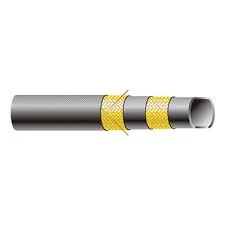335345435
Aug . 10, 2024 16:20 Back to list
Exploring the Versatility and Applications of Universal Hydraulic Hoses in Various Industries
Understanding Universal Hydraulic Hoses A Comprehensive Guide
Hydraulic systems are integral to numerous industries, from construction and agriculture to manufacturing and transportation. At the heart of these systems is the hydraulic hose, a vital component that facilitates the transmission of hydraulic fluid, allowing machines to perform efficiently. Among the different types of hydraulic hoses, universal hydraulic hoses stand out due to their versatility and wide range of applications.
What are Universal Hydraulic Hoses?
Universal hydraulic hoses are designed to be compatible with a variety of hydraulic systems and fluid types. They are constructed to meet specific pressure and temperature ratings, making them suitable for both low and high-pressure applications. The term universal emphasizes their adaptability; these hoses can be used across various machinery and equipment, reducing the need for specialized hoses for different applications.
Key Features of Universal Hydraulic Hoses
1. Material Composition Typically made from synthetic rubber or thermoplastic materials, universal hydraulic hoses are reinforced with layers of steel wire or textile braiding to enhance their strength and durability. This construction allows them to withstand high pressures and resist abrasion, making them ideal for demanding environments.
2. Pressure and Temperature Ratings Universal hydraulic hoses come with various pressure ratings, making them suitable for multiple applications. They can handle high-pressure systems commonly found in construction machinery and industrial processes. Additionally, these hoses are designed to operate effectively across a range of temperatures, from extreme cold to high heat, ensuring reliability in different conditions.
3. Versatility One of the biggest advantages of universal hydraulic hoses is their versatility. They can be used in agriculture for tractors and harvesters, in construction for excavators and bulldozers, and in manufacturing for assembly line equipment. This adaptability helps streamline inventory management for businesses, as they can stock a universal hose rather than multiple specialized options.
universal hydraulic hose

4. Ease of Installation Universal hydraulic hoses are generally designed for easy installation, often featuring standardized fittings that are compatible with various connectors. This characteristic simplifies maintenance and reduces downtime, as technicians can quickly replace or repair hoses without needing specialized tools or fittings.
Applications of Universal Hydraulic Hoses
The applications for universal hydraulic hoses are vast. In the construction industry, they are used in earthmoving equipment, cranes, and lifts. In agriculture, they are found in tractors, harvesters, and irrigation systems. Manufacturing equipment also relies on these hoses for hydraulic presses, conveyor systems, and robotic machinery. The ability to withstand extreme conditions makes them suitable for use in mining, oil and gas exploration, and other heavy-duty environments.
Maintenance and Safety
Despite their robustness, regular maintenance of hydraulic hoses is essential to ensure safety and performance. Inspecting hoses for wear, leaks, or damage can prevent accidents and costly breakdowns. Operators should also ensure that the hoses are not kinked or twisted during operation, as this can lead to reduced efficiency and premature failure.
Conclusion
Universal hydraulic hoses are a cornerstone of modern hydraulic systems, providing flexible, reliable solutions for a wide array of industries. Their robust construction, versatility, and ease of installation make them an indispensable tool in both daily operations and emergency repairs. Understanding the features, applications, and maintenance needs of these hoses is vital for anyone involved in industries that utilize hydraulic machinery, ensuring optimal performance and safety in every operation. Whether you are a technician, operator, or an industry planner, the value of universal hydraulic hoses cannot be overstated as they continue to power our world.
-
SAE 100 R17 Black Smooth Cover Hydraulic Hose
NewsMar.07,2025
-
SAE 100 R17 Black Smooth Cover Hydraulic Hose
NewsMar.07,2025
-
SAE 100 R17 Black Smooth Cover Hydraulic Hose
NewsMar.07,2025
-
SAE 100 R17 Black Smooth Cover Hydraulic Hose
NewsMar.07,2025
-
SAE 100 R17 Black Smooth Cover Hydraulic Hose
NewsMar.07,2025
-
steel wire braided hydraulic hose
NewsMar.07,2025



